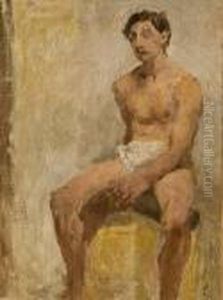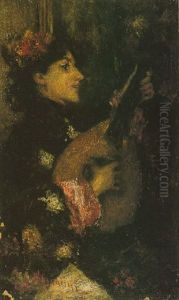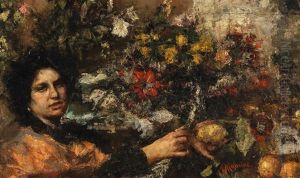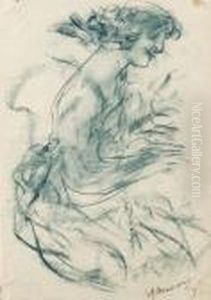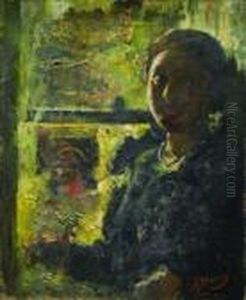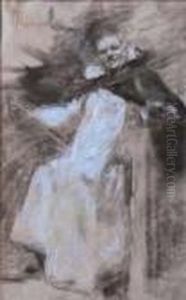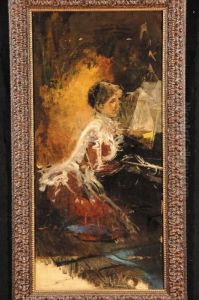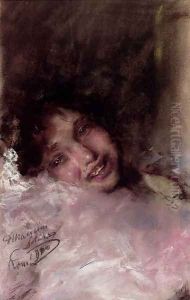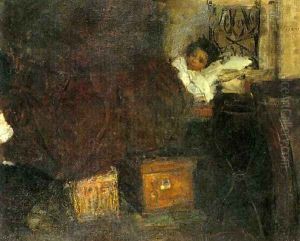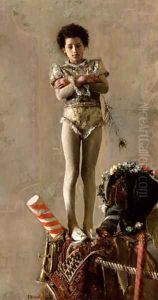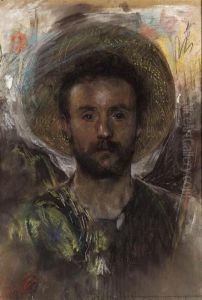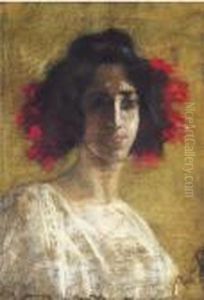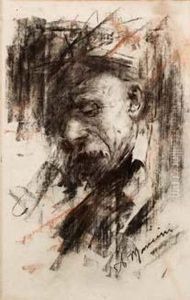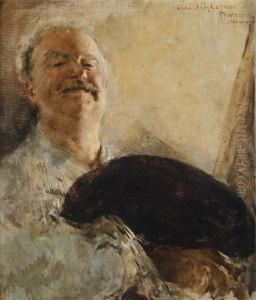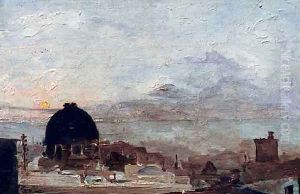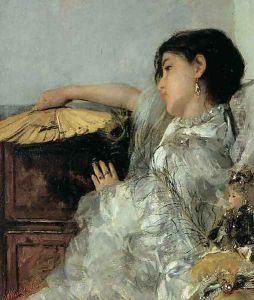Antonio Mancini Paintings
Antonio Mancini was an Italian painter regarded as one of the most significant and innovative artists of the late 19th and early 20th centuries. Born on November 14, 1852, in Rome, Mancini developed an interest in art at a young age and began his artistic training at the Instituto di Belle Arti in Naples. Under the guidance of Domenico Morelli, a well-respected painter of the time, Mancini was exposed to the traditional Neapolitan style of painting, which emphasized dramatic realism and strong chiaroscuro effects.
Mancini's early work was characterized by a realistic portrayal of subjects, often depicting the lives of the poor and the outcasts of society. His paintings from this period show a remarkable ability to capture the psychological complexity of his subjects, a trait that would remain a hallmark of his work throughout his life.
As Mancini's career progressed, he became known for his bold and experimental techniques. He often applied paint in thick, tactile layers, sometimes directly with his fingers, and incorporated materials such as glass, metal, and tar into his canvases to create a unique textural effect. This method of painting, which he called 'pittura scapigliata', was avant-garde for its time and gained him both admiration and criticism from his contemporaries.
In the 1870s, Mancini moved to Paris, where he was influenced by the work of the Impressionists and the city's vibrant artistic community. His style evolved to include lighter colors and a more spontaneous brushwork, reflecting the influence of the Impressionist movement. Despite his experimentation with new styles and techniques, Mancini never fully embraced Impressionism, and his work remained deeply rooted in the realistic portrayal of his subjects.
Throughout his career, Mancini struggled with mental health issues and financial difficulties, yet he continued to paint and exhibit his work. He received patronage from wealthy collectors, including the American collector and writer Henry James, who was a great admirer of Mancini's work. James described Mancini as 'the most interesting brain in modern art.'
Antonio Mancini's later years were marked by recognition and success. He returned to Italy, where his work was celebrated and he was regarded as a leading artist of the day. Mancini continued to paint until his death on December 28, 1930, in Rome. Today, his work is recognized for its emotional depth and technical innovation and is held in high regard by art historians and collectors alike.







